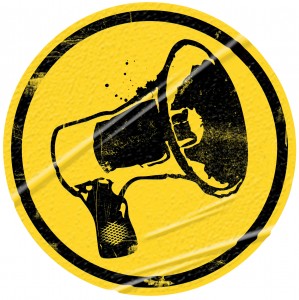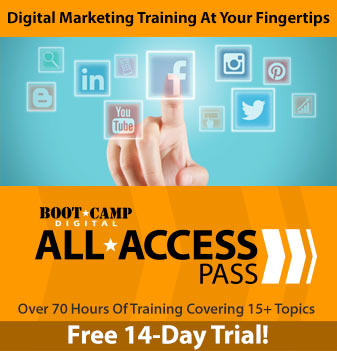
At the same time organizations struggle with how to quantify the ROI from their community managers and often wonder if the community manager is really helping them build their business.
As I work with different organizations one of the key problems that I encounter is that community management is not approached strategically. Like any part of your marketing strategy, or real-life networking a solid strategy is the key to creating an effective community manager role.
A solid strategy helps both the community manager and the brand to be on the same page regarding objectives, measures and results. Here are some tips to building an effective strategy for your community manager:
1) Know the players
First off – everyone matters. Whether they have 1 follower or 1,000 – everybody matters. That being said, there are people in your community who are more influential than others. The thought leaders. The influencers. The people who lead the crowd. Know who these people are. Interact with them. Follow what they say. Learn from them.
This will help you with both the listening side of social media (ie. filtering out the noise) and the outreach side of social media (being friends with the influencers always helps).
When I go to a real-life networking event or conference I usually have a few target people that I really want to meet or get in front of. Approach social media the same way. Know who you want to meet and why, and find a meaningful way to start a dialogue.
2) Set Goals Upfront
A lot of community managers start out with a vague job description and no clear goals. This makes it difficult for the brand or management and the community manager to measure results. Set goals and objectives upfront. They may change over time but you need a starting point.
3) Prioritize your Communities
Any space that you operate in likely has many different communities in different places – discussion groups, review sites, twitter, facebook, linkedin, niche social networks, other sites, blogs, etc. Start with a map of the possible communities that you can participate in and determine which ones are most important to your brand. This step can help prioritize time and energy, and ensures that everyone is on the same page.
Again, this may change over time based on results, however it is important to have a starting point. Over time you’ll want to optimize based on the results from your interactions on various communities.
4) Agree on Measures Upfront
There are lots of different ways to measure the effectiveness of community management. It is important that everyone agrees on what the metrics will be upfront. When selecting the metrics go beyond volume and traffic and focus on what really matters.
This will help everyone to understand how effective the community manager is, and it helps the community manager justify their position to the brand. Create a scorecard and review it on a regular basis.
5) Know that Community Management Covers Multiple Areas
While you may have a singular marketing goal for your community manager (ie. Drive sales, Deal with Negativity, Build Equity, Respond to Customer Service Issues), you’ll likely find that the community manager ends up doing a bit of all of these things.
Recognize the value that the community manager brings to many parts of your marketing strategy. Community managers will naturally have to respond to customer service issues or PR problems. Provide them with training and support to do this effectively. Recognize the value to your brand equity, customer service department, sales and PR from your community manager.
 6) Align on the “Voice of the Brand” online
6) Align on the “Voice of the Brand” online
I’ve seen situations where the community manager isn’t the best advocate for the brand online. For example, a company selling bikes to hard-core professionals may have difficulty if the community manager is a passive hobyist cyclist who isn’t taken seriously by the community.
Align on who your target audience is, and make sure that your community manager can be taken seriously by this audience as a legitimate member of the community. Align on the voice of the brand and the brand positioning, and make sure that your community manager can represent these effectively.
Anybody else have suggestions?
Hiring a community manager and throwing them on a bunch of social sites is probably not the best approach.


 6) Align on the “Voice of the Brand” online
6) Align on the “Voice of the Brand” online





























Great post, Krista. It’s really important to target strategic audiences — those that could make or break your organization — and then segment them. This helps with all public relations/communications planning, including social media strategy development. It’s very effective to work with key influencers, or thought leaders, in your target audiences. Thanks for your thoughts
Hi Mike
Thanks for the comment – I really appreciate your interest in my blog 🙂
I think that your comment is right on – knowing and segmenting your target audiences is key. know that you are doing great work in that area.
– Krista
Thanks for sharing these great tips Krista! I’m very interested in the concept of community management and glad to see that some companies are at least beginning to explore the possibilities in marketing – recruiting.
Moving from using social networks to recruit to building “Talent Communities” is likely the next step for savvy companies looking to connect with and recruit top talent. Your tips make perfect sense in that arena as well.
Also, here’s recent post on Communities that may be of interest in case you didn’t see it: http://is.gd/4ygqx.
We both must have had strategy on the brain today. I really like how you’ve related it to community management, something, as you know, is near to my heart. Good stuff here.
Jennifer – Thanks so much for the comment. I think that you are right about Talent Communities. I also appreciate the link that you shared – it is really interesting.
I recent read somewhere that the title of “community manager” is kind of lame – who wants to be managed? Perhaps a better name is community connector or something.
Daniel – thanks for the comment 🙂 I appreciate it.
Hey there,
I was checking you out and noticed that your Krista Neher site appears to be outdated – last post was a year ago – you have so much to say and I think you should say it everywhere 🙂
m..
Thanks 🙂 I need to update that site (I made it in my first days of getting online). It is intended to be a static site, but I definitely need to refresh it.
I’ll probably include feeds from this blog and the BootCamp Digital blog.
Thanks for keeping in touch!
– Krista